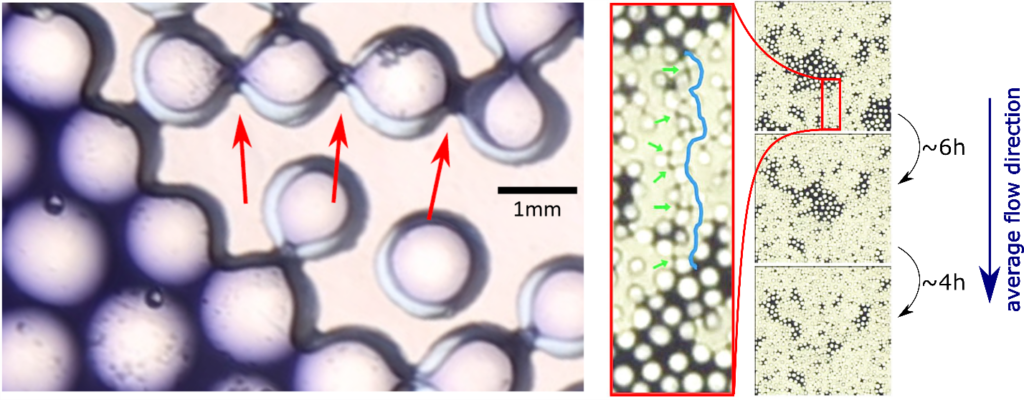Thin liquid films and capillary bridges can effectively enhance the connectivity of a porous medium, making it possible for the drainage of apparently trapped liquid clusters. This drainage due to film flow was recently characterized in a paper published in Phys. Rev. Fluids by PoreLab researcher Marcel Moura and collaborators. The experimental work has shown the existence of an active zone behind the main fluid-fluid interface, where the film flow drainage is more likely to occur. The authors have also directly imaged the network of capillary bridges in the medium (secondary network), which acts as the pathway for fluid transport due to film flow.
Details here:
M. Moura, E. G. Flekkøy, K. J. Måløy, G. Schäfer and R. Toussaint, “Connectivity enhancement due to film flow in porous media,” Phys. Rev. Fluids 4, 094102 (2019).
https://journals.aps.org/prfluids/abstract/10.1103/PhysRevFluids.4.094102

Thin liquid films and capillary bridges (red arrows in the left panel and green arrows in the central panel) can enhance the connectivity of a porous medium leading to the drainage of seemingly trapped liquid clusters (as seen on the right part of the figure). The central panel shows an enlarged view of the red rectangle, indicating that the capillary bridges help to form a connected pathway (schematically shown by the blue line) between the cluster being drained and the outlet of the system
